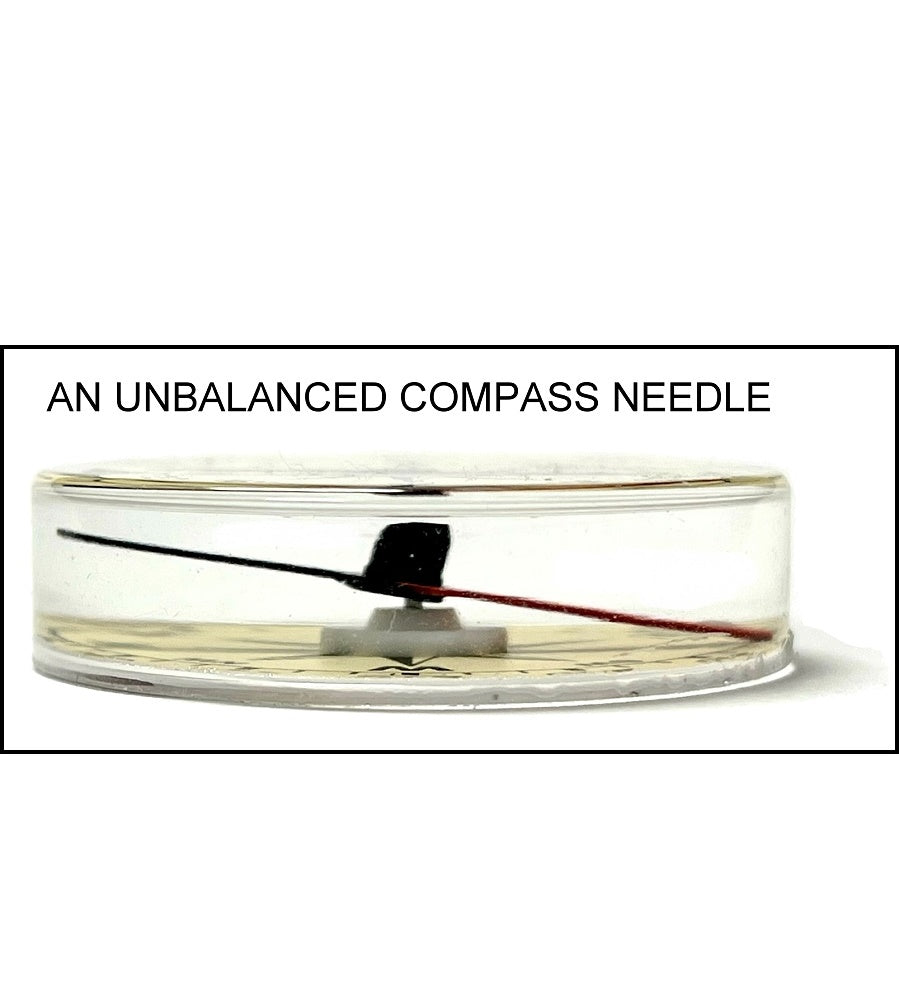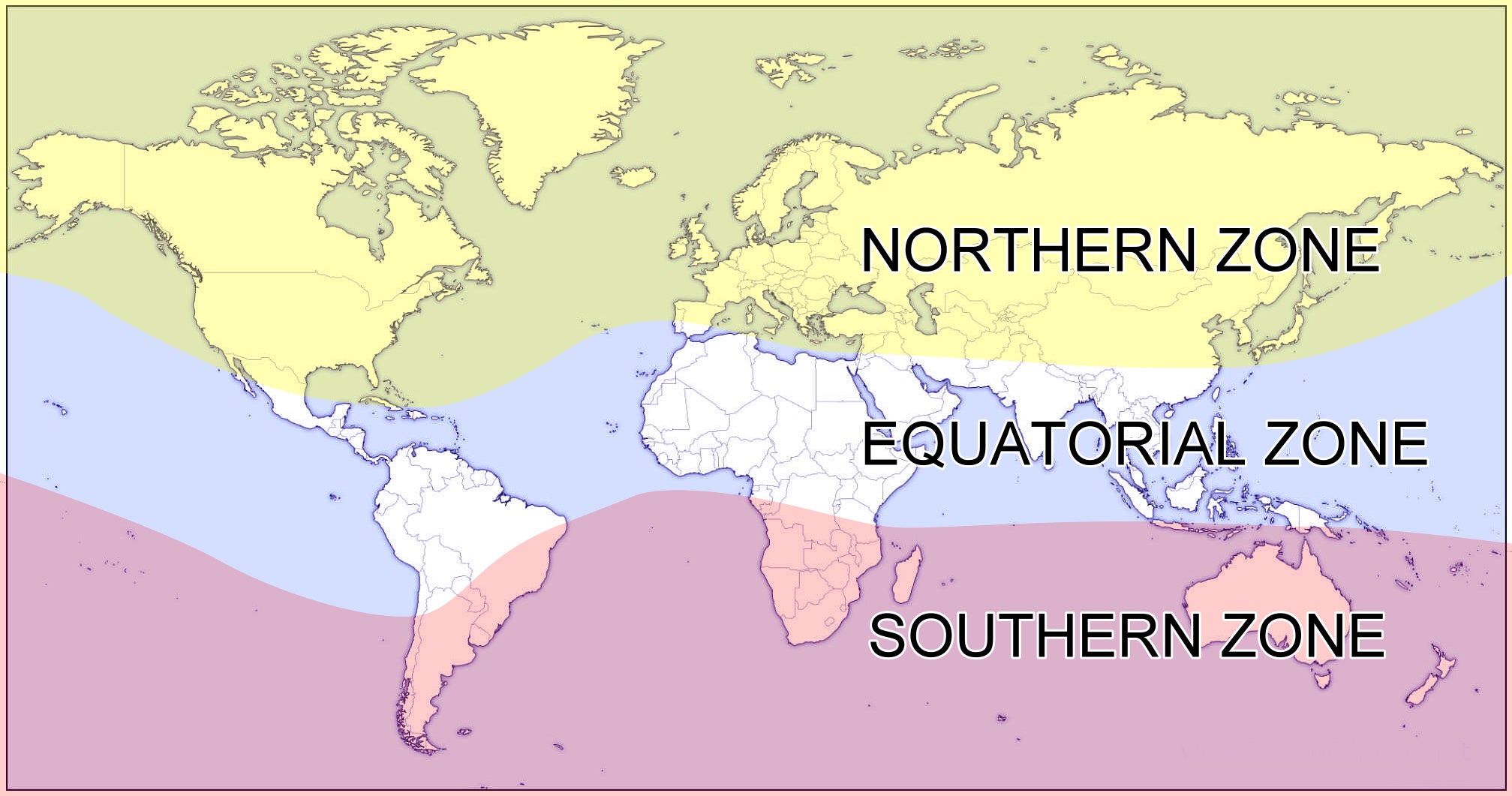
What is a Global Compass Needle?
Before you can fully understand a "Global" Compass Needle, you must understand a few basic principles of a compass. In order to get an accurate reading from a compass, the compass needle needs to be "balanced" in the capsule, so it does not drag on the top or bottom of the capsule, as it rotates. But, because the horizontal and vertical components of the earth's magnetic field vary considerably in different locations, a compass needle that "balances" perfect in North America will drag or stick in South America.
Unless noted as a “Global" Compass Needle, the compasses we sell are balanced for the Northern Hemisphere. Typically, these compasses work great in the Northern Magnetic Zone (see map), and will usually work halfway down into the Equatorial Magnetic Zone. But once you start approaching the Southern Magnetic Zone, you will begin to have issues with the needle dragging in the capsule. It's not that the compass won't work on the equator, you'll just have to hold it at a tilt to get the needle to rotate freely. Once your Northern Hemisphere compass enters the Southern Magnetic Zone, you will really struggle to get your compass to function properly.
In contrast, a compass with a global needle will allow you to hold the compass level, even at the equator or Southern Hemisphere, because the needle can still rotate freely when the needle has a little tilt. This is because these global compasses have a slightly different pivot style for the needle assembly, along with a taller compass capsule. The combined effect of these design differences allows the global compass needle to rotate freely even when the needle isn’t completely level. So, when we say that a compass is outfitted with a Global Needle for true world-wide performance, now you know what we mean.
But, what if you're not a world traveler? Why would you want a global needle? Well, the global compass needle's unique ability to handle tilts up to 20 degrees (10 degrees in either direction) makes it perfect for hikers that don't want to break their stride. Not having to level the compass exactly makes it easier to take an accurate reading while you're still moving along the trail -- or in something not always level, like a kayak.
